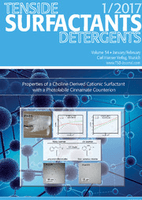
TENSIDE SURFACTANTS DETERGENTS
Scope & Guideline
Fostering Knowledge in the World of Surfactants
Introduction
Aims and Scopes
- Surfactant Chemistry and Synthesis:
Explores the chemical synthesis of various surfactants, including ionic, nonionic, cationic, and amphoteric types, with a focus on their molecular structures and functional properties. - Applications in Cleaning and Detergency:
Investigates the effectiveness of surfactants in cleaning applications, including household and industrial detergents, with an emphasis on performance metrics and consumer behavior. - Environmental and Ecological Impact:
Studies the biodegradability, eco-friendliness, and sustainability of surfactants, particularly biosurfactants, to understand their impact on the environment. - Physicochemical Properties and Interactions:
Analyzes the physicochemical properties of surfactants, including their aggregation behavior, surface activity, and interactions with other substances. - Advanced Characterization Techniques:
Utilizes various characterization methods such as spectroscopy, rheology, and micellization studies to elucidate surfactant behavior and performance in different formulations.
Trending and Emerging
- Biosurfactants and Green Chemistry:
A significant increase in research on biosurfactants, highlighting their ecological benefits and potential applications in sustainable practices, reflects a growing trend towards green chemistry. - Artificial Intelligence and Machine Learning Applications:
Emerging studies on the use of AI and machine learning to predict surfactant behaviors and optimize formulations suggest a trend towards integrating technology with surfactant research. - Advanced Characterization Techniques:
There is a rising interest in sophisticated characterization methods, such as dynamic light scattering and rheology, to better understand surfactant interactions and properties. - Consumer Behavior Studies:
Research exploring consumer attitudes towards detergents and cleaning products is increasing, indicating a trend towards understanding market dynamics and consumer preferences. - Nanotechnology in Surfactant Applications:
The use of nanotechnology in developing advanced surfactant formulations, particularly for enhanced cleaning and delivery systems, is gaining traction in recent publications.
Declining or Waning
- Traditional Synthetic Surfactants:
There is a noticeable reduction in studies focused solely on traditional synthetic surfactants, as the field shifts towards more sustainable and eco-friendly alternatives like biosurfactants. - Single-Component Systems:
Research on single-component surfactant systems is declining, with an increasing focus on complex formulations and mixtures that better mimic real-world applications. - Basic Surfactant Properties:
The exploration of fundamental properties of surfactants, such as basic surface tension measurements, is becoming less frequent, possibly due to a shift towards more applied and innovative studies. - Non-Functional Applications:
There is a decreasing interest in non-functional applications of surfactants, as the focus is shifting towards specific functional roles in industries like pharmaceuticals and food technology.
Similar Journals

JOURNAL OF SURFACTANTS AND DETERGENTS
Connecting Researchers and Industry in Surface ChemistryJournal of Surfactants and Detergents, published by Wiley, is a prominent peer-reviewed journal dedicated to advancing scientific knowledge in the field of surfactants, detergents, and their applications. With an ISSN of 1097-3958 and an E-ISSN of 1558-9293, this journal serves as an essential resource for researchers, industry professionals, and students specializing in Chemical Engineering, Physical and Theoretical Chemistry, and Materials Science. Since its inception in 1998, the journal has fostered innovative research and multidisciplinary collaboration, reflected in its current Q3 ranking in several Scopus categories. Although it operates under a traditional publishing model, the journal's robust research contributions continue to engage a wide audience eager to explore the latest developments in surfactant and detergent science. As a key player in the field, the journal not only publishes cutting-edge research but also facilitates dialogue and knowledge exchange, making it an invaluable asset for anyone invested in the chemistry of surfaces and interfaces.

Central European Journal of Energetic Materials
Bridging Theory and Practice in Energetic MaterialsWelcome to the Central European Journal of Energetic Materials, a distinguished publication in the field of energetic materials, published by the INST INDUSTRIAL ORGANIC CHEMISTRY in Poland. This journal, with ISSN 1733-7178, has been a vital platform for researchers since its inception in 2009, promoting the latest advancements and discoveries in the dynamic fields of Materials Chemistry and Organic Chemistry. With an admirable presence in the academic community, it boasts a Q3 ranking in Materials Chemistry and a Q4 ranking in Organic Chemistry for 2023, showcasing its contribution to foundational research despite competitive challenges. Researchers looking to disseminate their findings will find this journal a reputable venue, supported by rigorous peer-review processes and a commitment to open dialogue within the scientific community. The journal is pivotal for academics, professionals, and students interested in the synthesis, characterization, and application of energetic materials, making it a notable resource for understanding the complexities and innovations within this specialized domain.

COLLOIDS AND SURFACES A-PHYSICOCHEMICAL AND ENGINEERING ASPECTS
Transforming Research into Practical ApplicationsCOLLOIDS AND SURFACES A-PHYSICOCHEMICAL AND ENGINEERING ASPECTS is a prestigious journal published by Elsevier, focusing on the interdisciplinary domains of colloid and surface chemistry, physical and theoretical chemistry, and engineering aspects. With an impressive impact factor and consistently high rankings—Q2 in Colloid and Surface Chemistry, and Q1 in both Physical and Theoretical Chemistry as well as Surfaces and Interfaces—it stands as a vital resource for researchers and professionals seeking to advance their understanding in these critical areas of study. Established in 1993, the journal spans over three decades of publication, gathering robust interdisciplinary insights that cater to both fundamental research and practical applications. While the journal is not currently open access, it remains an essential platform for disseminating innovative studies that explore the physicochemical properties of colloidal systems and surface interactions. Based in the Netherlands, the journal actively encourages contributions that enhance the scientific community’s knowledge and application of these complex phenomena, making it an indispensable tool for students and professionals alike in their quest for cutting-edge advancements.
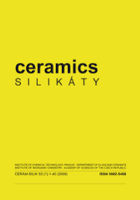
CERAMICS-SILIKATY
Innovating Materials Chemistry for a Sustainable FutureCERAMICS-SILIKATY is a distinguished open-access journal published by the University of Chemistry and Technology, Prague, specializing in the fields of Ceramics and Composites, Analytical Chemistry, Chemical Engineering, and Materials Chemistry. Since its inception in 1991, this journal has played a pivotal role in disseminating cutting-edge research and innovative findings in the study of ceramics, emphasizing both fundamental and applied aspects. With a commitment to accessibility since 2000, CERAMICS-SILIKATY promotes knowledge sharing among researchers, professionals, and students globally. The journal's current standing in the Q3 Quartile across several categories highlights its significant contributions and relevance in the academic community. As a hub for interdisciplinary research, the journal invites submissions that advanced our understanding of ceramic materials and their applications, positioning itself as an essential resource for those engaged in the forefront of materials science.

Physicochemical Problems of Mineral Processing
Bridging Theory and Practice in Mineral Processing InnovationsPhysicochemical Problems of Mineral Processing is a prestigious journal that serves as a vital resource in the fields of Economic Geology, Geology, Materials Chemistry, Physical and Theoretical Chemistry, and Process Chemistry and Technology. Published by OFICYNA WYDAWNICZA POLITECHNIKI WROCLAWSKIEJ in Poland, this journal has been a cornerstone of interdisciplinary research since its inception in 2008, with a commitment to advancing our understanding of mineral processing through innovative physicochemical methodologies. With a respectable Q3 category ranking across multiple disciplines and Scopus rankings that reflect its growing impact and relevance, the journal invites researchers, professionals, and students to explore cutting-edge studies, original articles, and case reports aimed at enhancing the mineral processing field. While the journal does not offer open access, it provides valuable insights and contributions to the global academic community, making it essential reading for those looking to push the boundaries of knowledge in this critical area.
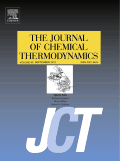
JOURNAL OF CHEMICAL THERMODYNAMICS
Elevating Knowledge in Thermodynamic ApplicationsThe JOURNAL OF CHEMICAL THERMODYNAMICS serves as a pivotal platform for the dissemination of high-quality research in the field of thermodynamics and its applications across various scientific disciplines. Published by Academic Press Ltd - Elsevier Science Ltd, this esteemed journal, with an ISSN of 0021-9614 and E-ISSN 1096-3626, strives to contribute to the understanding of the thermodynamic properties of chemicals, materials, and molecular interactions. Covering a broad spectrum of topics from atomic and molecular physics to general materials science, it consistently ranks in the Q2 category across multiple fields including Physics and Astronomy, Chemistry, and Materials Science. With its convergence years extending from 1969 to 2025, the journal boasts a respected history and a commitment to fostering scholarly dialogue among researchers, professionals, and students alike. Though it is not an Open Access journal, its rigorous peer-review process ensures that published articles meet the highest standards of scientific excellence, making it an essential resource for anyone seeking to stay at the forefront of chemical thermodynamics research.

CURRENT OPINION IN COLLOID & INTERFACE SCIENCE
Unveiling Cutting-edge Insights in Interface ScienceCURRENT OPINION IN COLLOID & INTERFACE SCIENCE, published by Elsevier Science London, serves as a premier platform for researchers and professionals in the field of colloid, interface science, and related disciplines. With an impressive Q1 ranking in multiple categories including Colloid and Surface Chemistry, Physical and Theoretical Chemistry, Polymers and Plastics, as well as Surfaces and Interfaces, this journal showcases cutting-edge developments and expert opinions that drive innovation in these areas. As a leader in its field, it maintains robust academic standards, reflected in its high percentile rankings across various Scopus categories, such as 3rd in Surfaces and Interfaces and 10th in Physical and Theoretical Chemistry. While the journal is not Open Access, it provides valuable insights to a wide audience, making it an essential resource for advancing knowledge and fostering collaborations among researchers, academics, and industry professionals alike. With a continual publication timeline extending from 1996 to 2024, it captures the evolving landscape of colloid and interface science, ensuring that readers are equipped with the latest findings and perspectives.
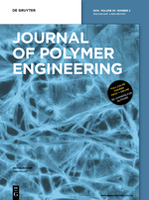
JOURNAL OF POLYMER ENGINEERING
Innovating Solutions Through Polymer Engineering.JOURNAL OF POLYMER ENGINEERING, published by Walter de Gruyter GmbH, stands as a pivotal platform in the field of polymer science and engineering. With an ISSN of 0334-6447 and an E-ISSN of 2191-0340, this journal has been a vital contributor to the academic landscape since its inception, spanning publications from 1981 to 2024. As a recognized entity in the realms of Chemical Engineering, Materials Chemistry, and Polymers and Plastics, it holds a respectable position in Q3 quartile rankings according to the latest assessments. The journal is positioned to promote the exchange of cutting-edge research findings, technological advancements, and critical reviews that address the complexities of polymer application and innovation. Researchers and professionals will find a wealth of information, from experimental methodologies to theoretical analyses, all designed to inspire and elevate the current understanding of polymer engineering. By fostering collaboration and dissemination of knowledge, the JOURNAL OF POLYMER ENGINEERING remains crucial for advancing research and education in its specialized domains.

REVUE ROUMAINE DE CHIMIE
Pioneering Research: Where Romanian Chemistry Meets the WorldREVUE ROUMAINE DE CHIMIE is a distinguished academic journal in the field of chemistry, published by EDITURA ACAD ROMANE in Romania. With an ISSN of 0035-3930, this journal has been a valuable platform for disseminating original research and insights in the diverse realm of chemistry since its inception. The journal currently operates under a competitive tier, categorized in Q4 for miscellaneous chemistry fields, as reflected in its Scopus ranking of #348 out of 408, placing it within the 14th percentile. Aiming to foster scientific discourse and innovation, the REVUE ROUMAINE DE CHIMIE provides a repository of knowledge that is crucial for researchers, professionals, and students eager to advance their understanding and contribute to the global chemistry community. By bridging local and international research initiatives, this journal plays an essential role in enhancing the visibility of Romanian scientific contributions on the world stage.
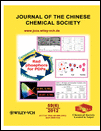
JOURNAL OF THE CHINESE CHEMICAL SOCIETY
Highlighting Breakthroughs in General ChemistryJOURNAL OF THE CHINESE CHEMICAL SOCIETY, published by WILEY-V C H VERLAG GMBH, is a vital resource in the field of chemistry, focusing on a broad array of topics pertinent to general chemistry and its advancing sub-disciplines. Established in 1954 and running through 2024, this journal serves as a significant platform for the dissemination of high-quality research, showcasing innovative findings and developments within the chemical sciences. With its Q3 category ranking and positioning at Rank #203 in General Chemistry per Scopus, it reflects the journal's commitment to research excellence and impact. While not an open-access publication, it ensures accessibility to a global audience, making it an essential tool for researchers, professionals, and students alike seeking to stay informed and engaged in the evolving landscape of chemistry.